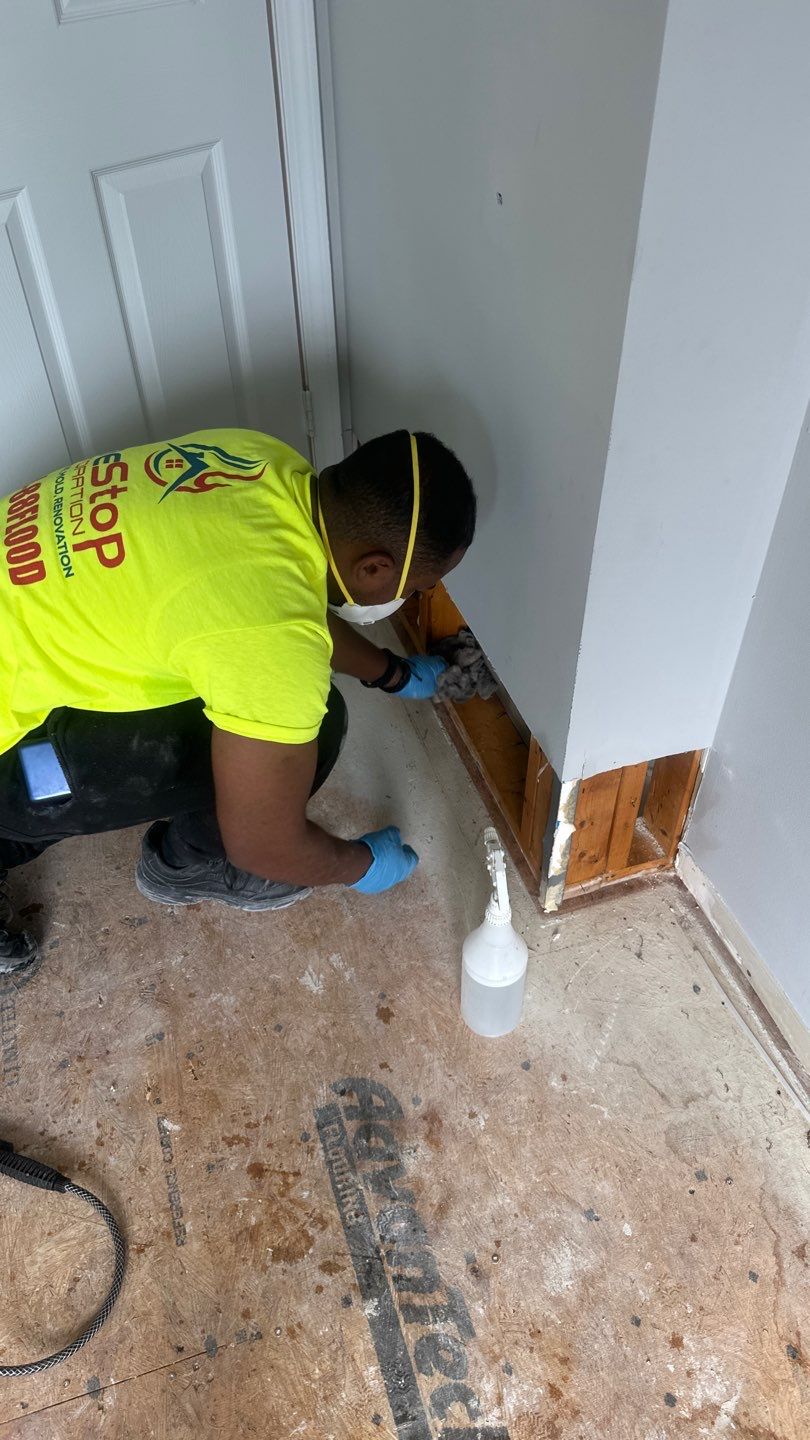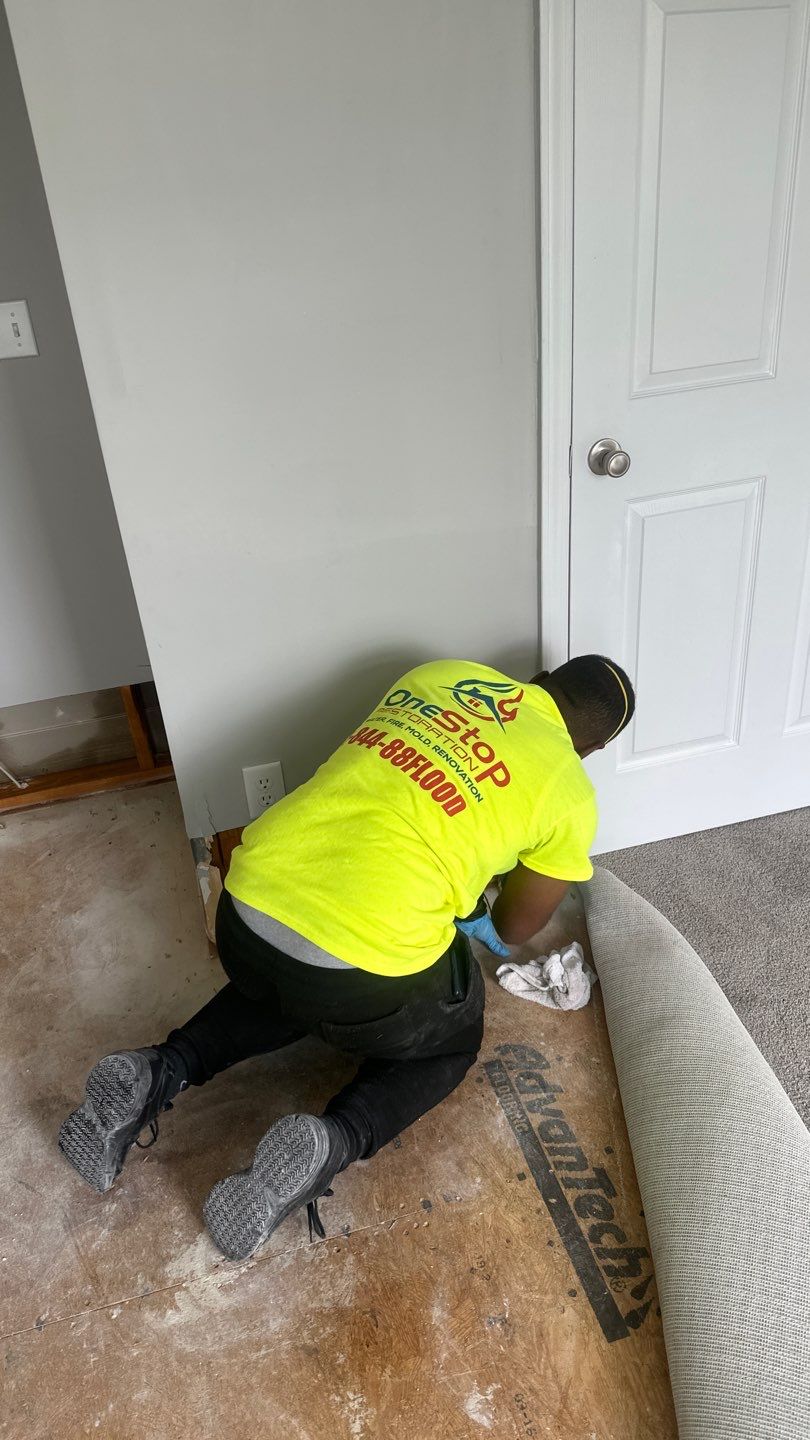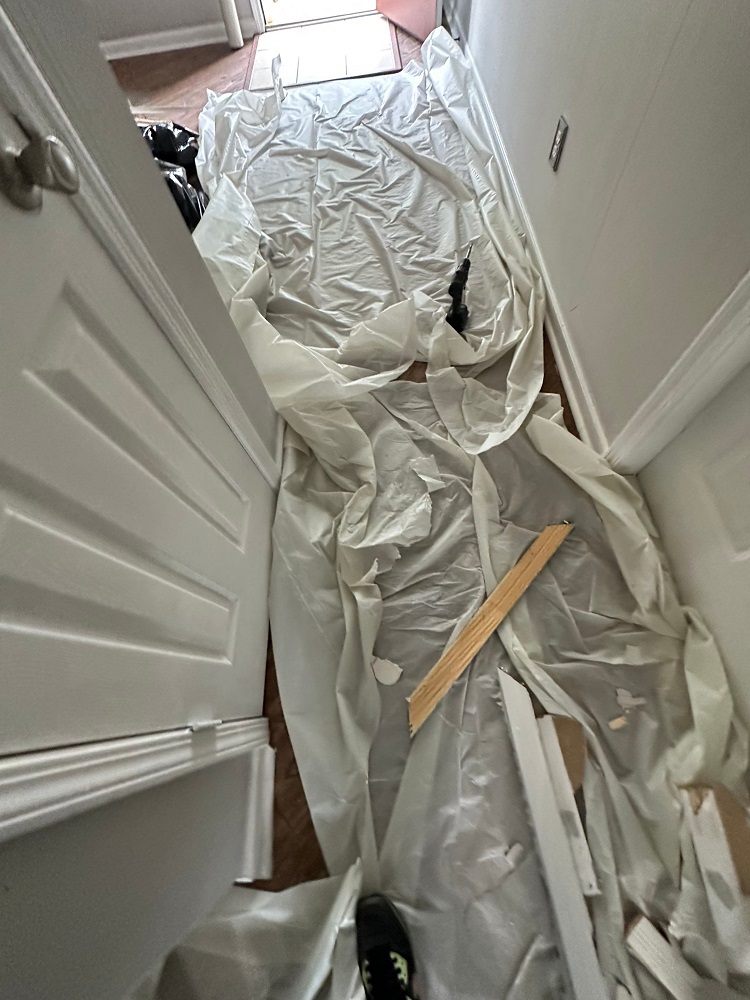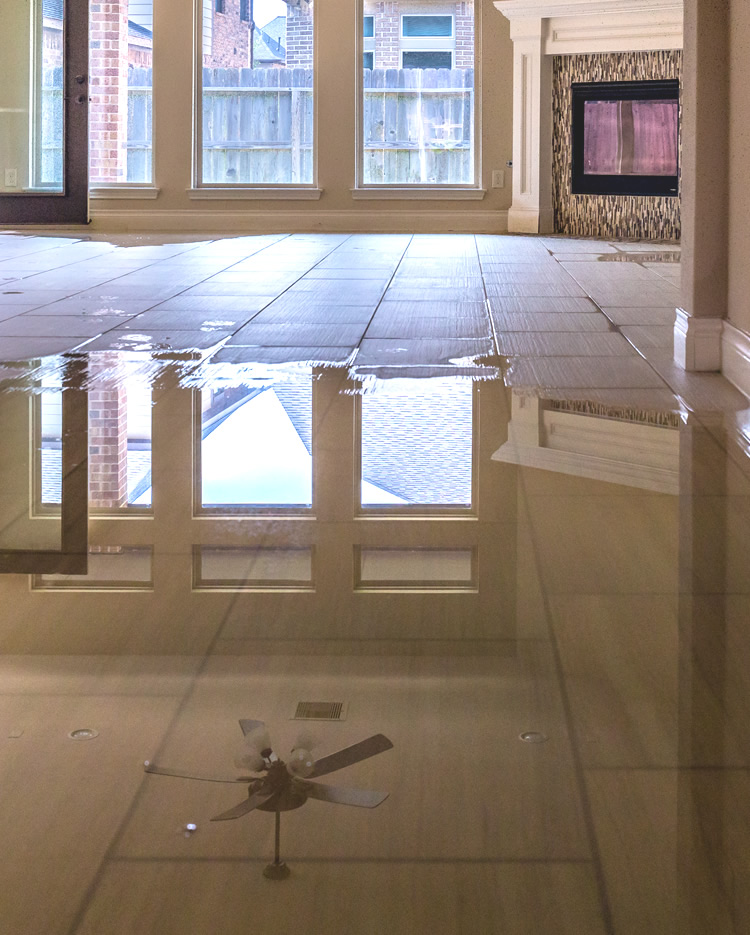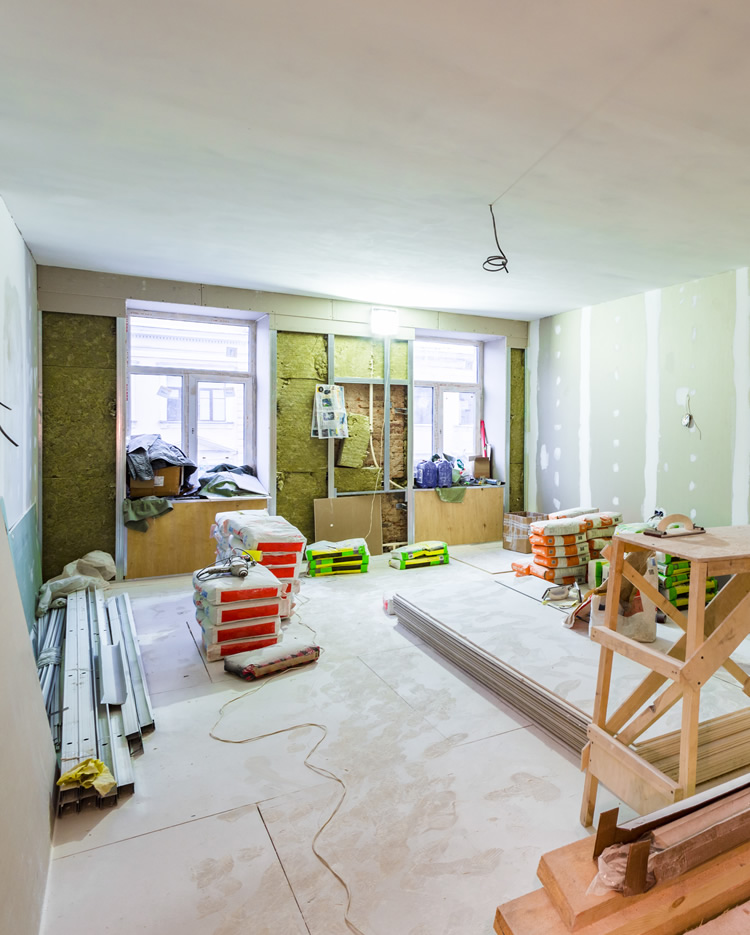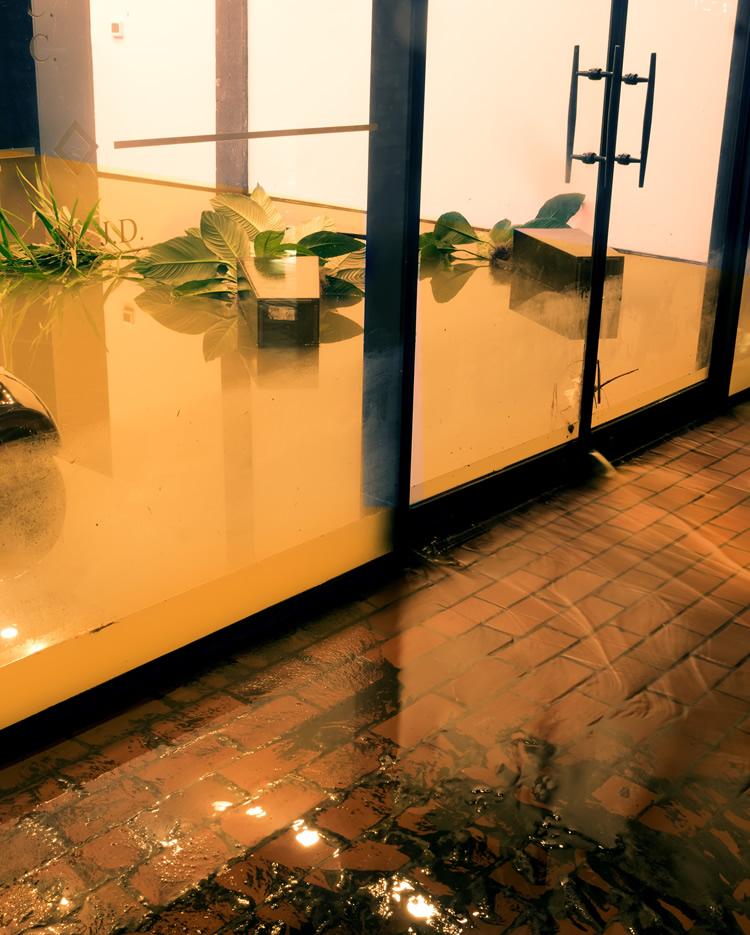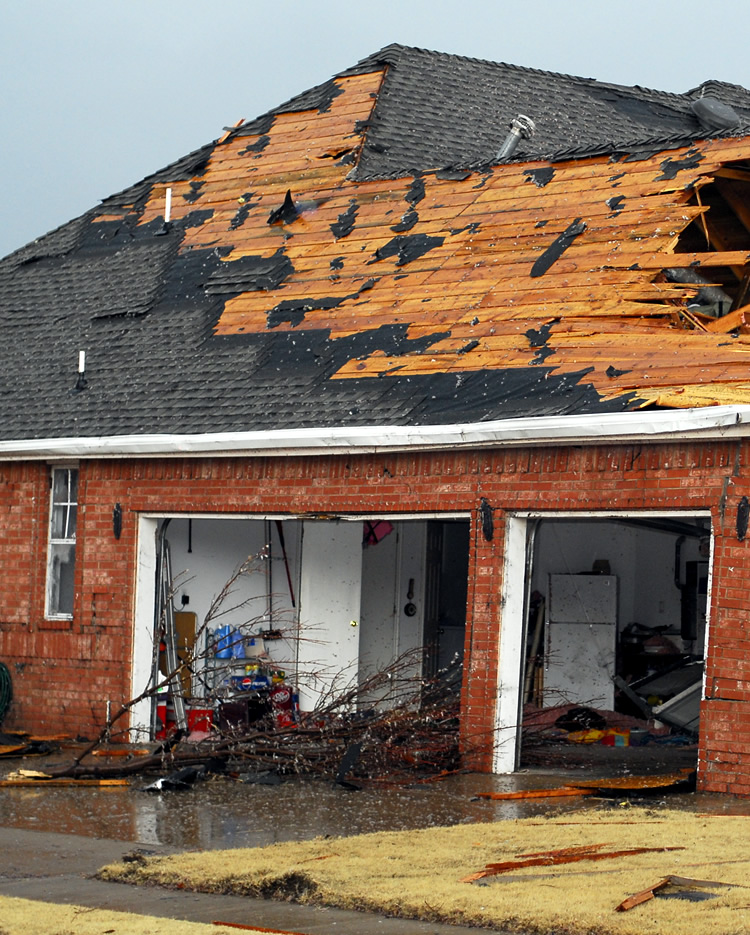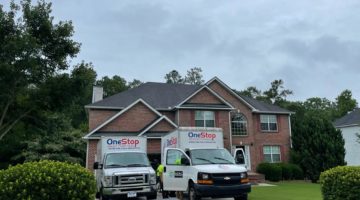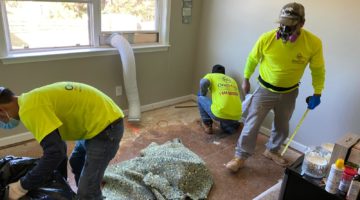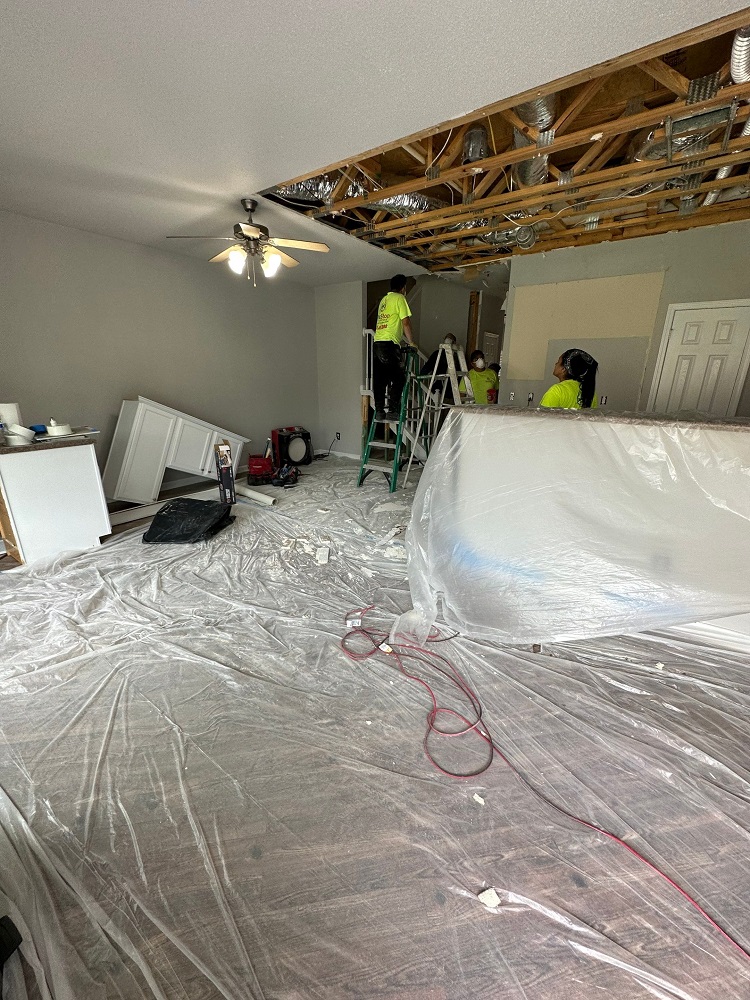
Blog post
Ceiling Water Damage
If you’re dealing with ceiling water damage, there are probably many questions bouncing around in your head. How long does ceiling water damage repair take? How much will it cost? Are there DIY options? Or, do you have to call in the pros?
At One Stop Restoration, we have heard all of these questions from clients desperate to know what to do. We understand that water damage is stressful, and you want the quickest, most affordable solution possible. We’re here to help. From our homebase in Norcross to the larger Atlanta Metro Area, we’ll be on the scene to help you deal with water damage from leaks, house fires, or even natural disasters.
Here’s a rundown of what you can expect when your home has sustained this type of water damage.
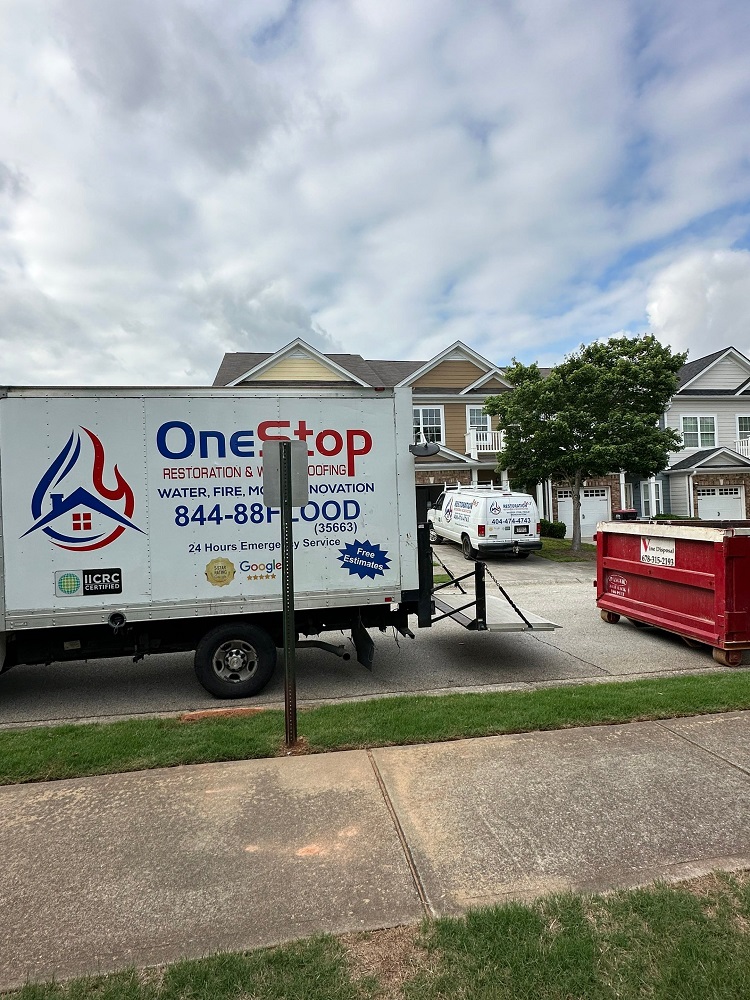


Ceiling water damage repair assessment
The first thing a professional team will do to start the process of repairing your space is an assessment. This allows us to see the extent of the damage and pinpoint the source of the leak if it’s not already known. We’ll also be able to give you a detailed estimate for the cost and time it will take to restore your ceiling.
This is one of the most essential ceiling water damage repair steps. Without it, we could miss a crucial detail that could lead to further damage from mold growth and structural failure down the line.
How to fix a water damaged ceiling from start to finish
Once we’ve done our assessment, we’ll put together a professional ceiling water damage repair plan, with the following steps:
- Stop the water damage at the source and prevent future damage. Whether your water damage was sustained as the result of a heavy storm, roof leak, or plumbing problem, the first order of business will be to stop the water flow.
- Start drying out the space. Once the leaking source has been fixed, we’ll roll in our most important ceiling water damage repair tools: the wet vacs and air movers. It’s important to move quickly on this part of the repair because mold can begin to grow within days of water exposure.
- Remove or discard damaged items. Wall decor, rugs, and furniture may be salvaged depending on the extent of the damage. But no matter their conditions, we recommend removing anything that can harbor mold.
- Remove damaged drywall and insulation. Our next step will be to scrape away damaged drywall or wood panels from the ceiling, as well as any damaged insulation.
- Eradicate mold colonies, if they are present. If we detect mold as we strip away the drywall, our next step will be removing it and treating all surfaces that have been affected.
- Replace structural components and drywall. If there has been damage to ceiling joists and other structural parts of your ceiling, we’ll replace or reinforce whatever needs to be addressed. Then we’ll replace the drywall.
- Paint with mold-resistant paint. Our final step will be to paint the ceiling with mold-resistant paint.
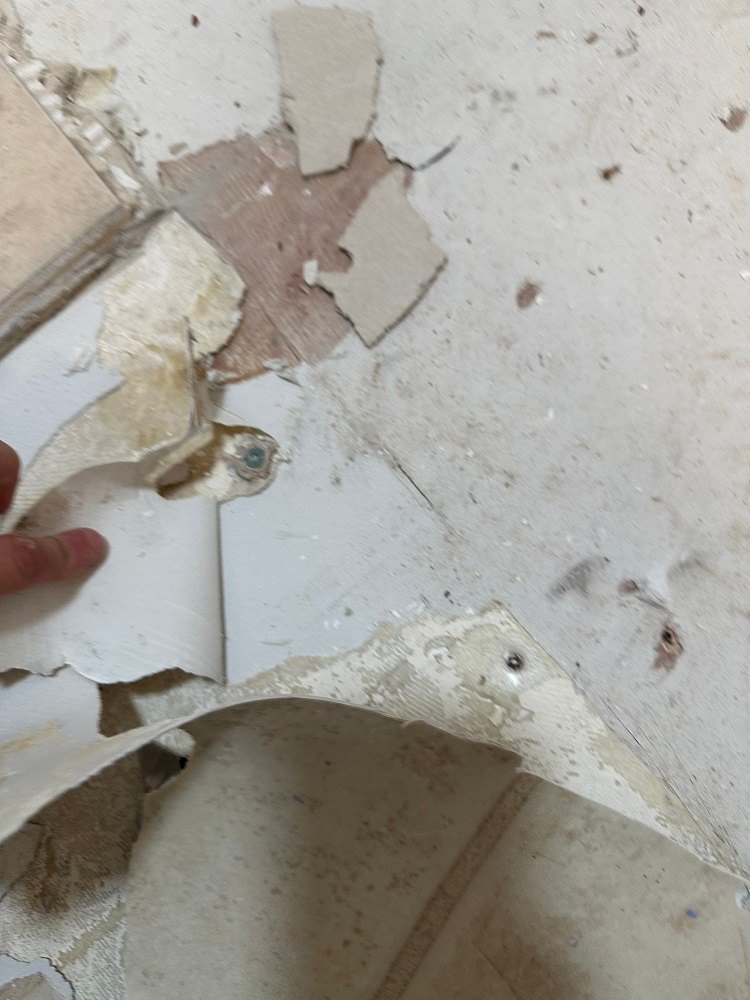
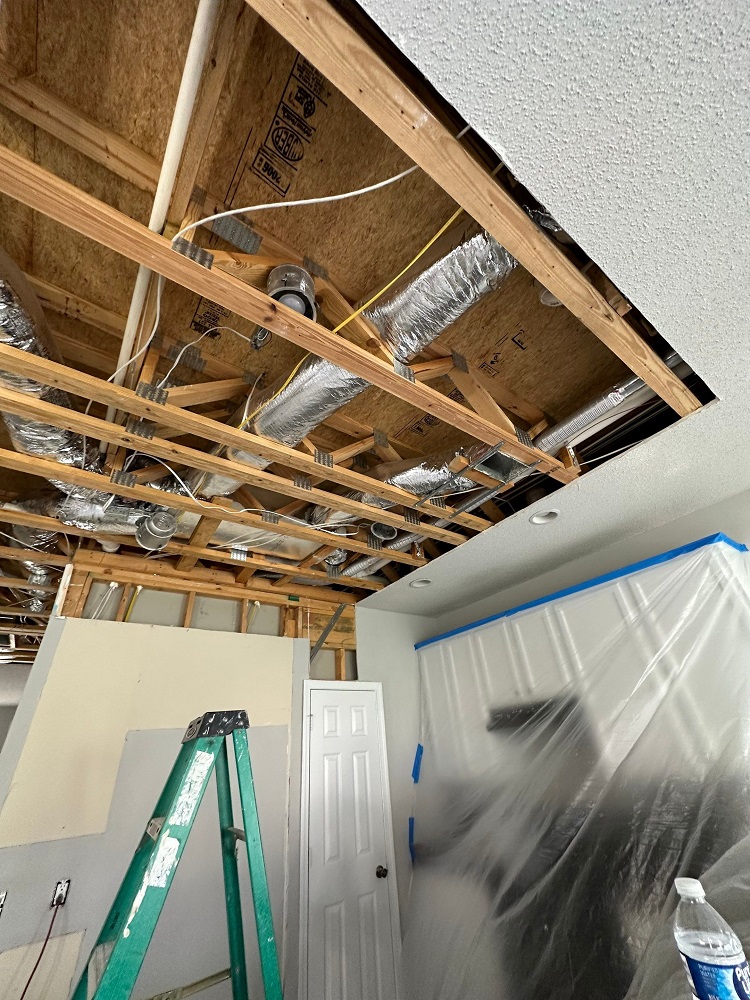
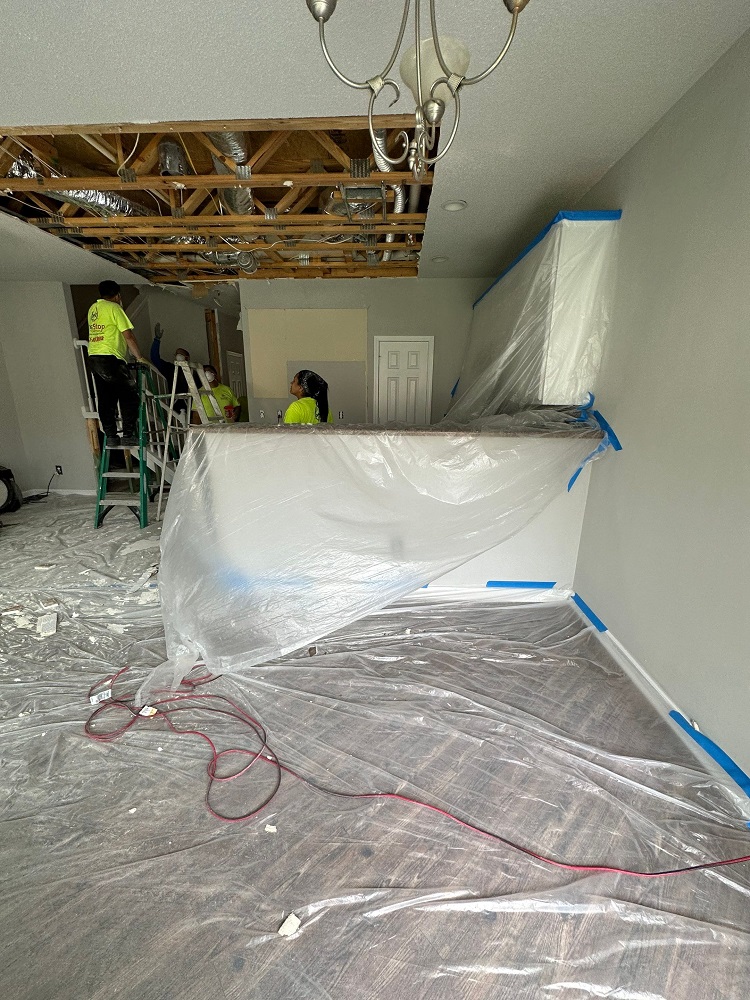
How long does this process take?
How long a repair process will take depends on two main factors: the extent of the damage and the drying process. Very small jobs in which the main cause of the leak has already been fixed may take only a few hours. But, extensive jobs could require a few days of labor.
And, then there’s the drying process to consider. Because we experience some very humid conditions here in Georgia, drying out a house after a flood or storm can take days.
When you give us a call, we’ll talk you through our current time estimates.
Ceiling water damage repair cost estimate
As you might have guessed by now, the extent of ceiling damage can vary widely. If you experienced a burst pipe that flooded your home, for instance, you’ll have a different set of costs than in a home that has to replace their roof. That being said, it typically costs somewhere between $250 and $1200 in the Atlanta Metro Area.
Are there ceiling water damage repair DIY solutions?
If you’re dealing with a very small damage area on your ceiling, you might wonder if you can fix it yourself. Well, if you are generally comfortable with home fix-it projects, you might be able to locate the leak, fix it and replace the drywall.
However, there is always a risk when going the DIY route. On the one hand, you could be exposing yourself to dangerous materials like mold, contaminated water, or unstable structures. A professional team has all of the hazmat equipment to keep ourselves safe on the job so that you don’t have to worry about your own health.
Another drawback of doing the repairs yourself is that you may not have the tools to assess whether the water damage is really gone. If you miss water in areas of your ceiling hidden by drywall, you could have future problems with wood rot and mold. We have specialized equipment to get accurate readings on humidity levels in your ceiling so that when the job is done, you don’t have to worry about calling us again.
How to prevent ceiling water damage
Once you’ve dealt with ceiling damage, you definitely want to prevent it from coming back in the future. Here are a few ways that you can protect yourself from water damage:
- Have your roof inspected. It’s recommended that you have your roof professionally inspected once or twice per year. The best time to do it is before the rainy season starts picking up in spring.
- Don’t ignore small leaks. We get that it can be tempting to place a pot under a tiny leak in your ceiling every time it rains. But, the truth is, you may only be seeing a small amount of the water that is actually up there. This could lead to a much more costly repair process the longer it goes unchecked.
- Install storm windows. Upgrading your windows has the double benefit of protecting your home from possible water damage during storms and lowering your energy costs.
- Don’t let plumbing issues go unaddressed. A decrease in water pressure may not seem like a pressing problem, but it could signal a leak somewhere in the house. Any kind of plumbing issue should be considered a potential risk for bigger problems to come, so make sure to call in a plumber as soon as you can.
- Upgrade your ventilation system. As we mentioned earlier, one of the reasons why ceiling water damage repair contractors have to work so quickly is because mold grows fast. Having a functioning, efficient ventilation system can give you a leg up in the unfortunate case of a leak.
Call One Stop Restoration to get your ceiling back to beautiful!
Ceiling damage isn’t just an eyesore. It can be a risk to your home’s structural integrity as well as an invitation for mold. There are many ceiling water damage repair options in the Atlanta area, but here at One Stop Restoration, we’ll make the processes as easy, reliable and affordable as possible. Give us a call and we’ll come to your home in Norcross or anywhere else in the greater Atlanta area.
PROFESSIONAL SERVICES
Partial list of our services
TESTIMONIALS
What our customers say
Kit Harington
Atlanta, Georgia - HomeownerWhy One Stop Restoration?
We are the right fire and smoke restoration firm for your emergencies because of the following:
- 24/7 Availability
- Experience
- Modern Equipment
- Quality Insurance Cover
OUR BLOG
Latest news from us
Water and Flood Damage
Blog post Top 5 Things to Know About Water and Flood Damage Don’t be left wondering what to do...
Mold Remediation
Blog post Mold Remedation As a homeowner, the mere mention of mold might give you a cold sweat. It’s...

